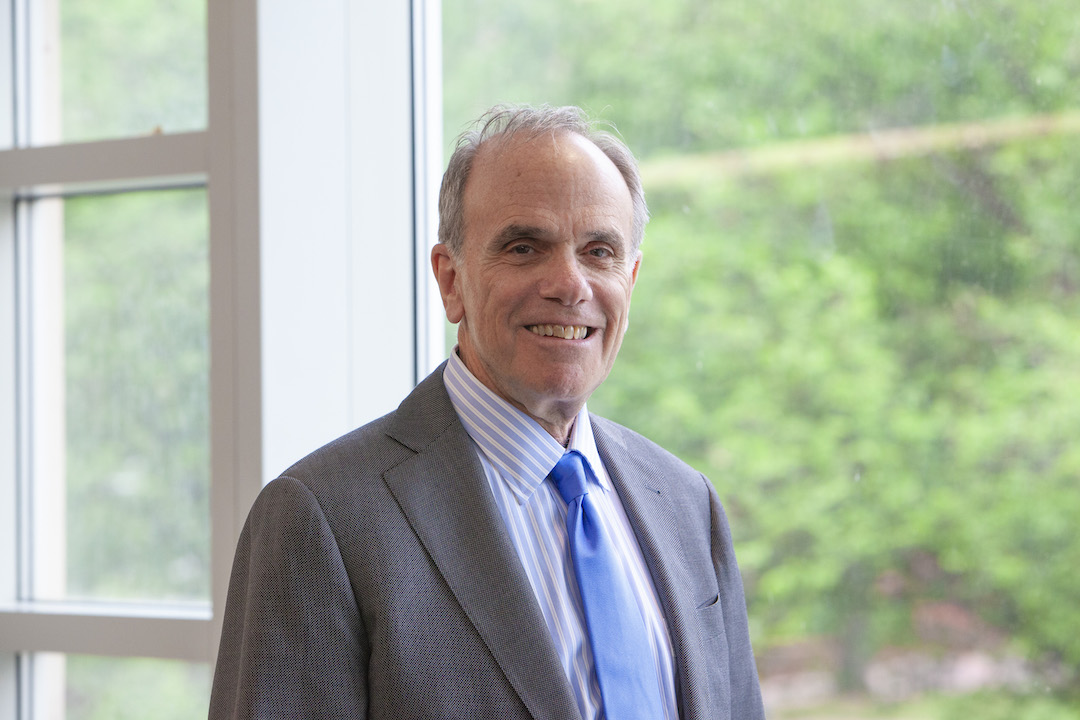This is the first in an occasional series of articles that feature the deans of the university’s schools.
By Tatyana Hopkins
If there is any silver lining to the COVID-19 pandemic, it is exposing a long-standing and untenable status quo in American society, characterized by growing disparities that deny equitable access to educational opportunity for many students, said Michael Feuer, dean of the George Washington University Graduate School of Education and Human Development.
For example, he said that although average learning losses associated with COVID-19 school disruptions have been perhaps lower than parents and educators initially anticipated, the revelation of significantly disproportionate outcomes along socioeconomic lines tells a familiar story about inequality in education.
“School systems at all levels were resilient, communities came together and parents and teachers tried their best to maintain some continuity, and on average, at least at the K-12 level, it seems that the amount of loss so far, although measurable, may not be as bad as people feared,” Dr. Feuer said. “[However], what has become much clearer is the variance across race, income, immigrant status, language and [other] factors that have always contributed to inequality of educational outcome.”
A professor of education with expertise in assessment, economics and the role of research in shaping policy, Dr. Feuer said that while COVID-19 did not cause the problems of inequality of educational opportunity, the light it shined may be a key to solving them.
Dr. Feuer is the immediate past president of the National Academy of Education and is a nonresident senior fellow in the Center for Universal Education at the Brookings Institution. In 2014, President Barack Obama appointed Dr. Feuer as a member of the board of directors of the National Board for Education Sciences.
Throughout the pandemic, Dr. Feuer and his GSEHD, Brookings and National Academy colleagues have highlighted how digital learning in the COVID-19 era has worsened education inequities for some students and have shared their thoughts on the importance of not turning a blind eye to the matter post-COVID-19.
“Now, there are more people who see daily headlines about disparities in education, the digital divide and kids of color not having the same opportunities,” Dr. Feuer said. “This is an opportunity for us to galvanize the political will necessary to confront these problems and to apply the knowledge being produced by GSEHD faculty, students and staff.”
In GSEHD, he said inequality and racial injustice have long been “front and center” on the minds of its faculty and students, and he noted that during the past two years the school has doubled down on its efforts to ensure that equity and justice are ideals “not only to teach, but to practice.”
First, to make justice and equity a part of GSEHD’s “practice,” Dr. Feuer noted that the school amped up efforts in school activities such as guest speakers, forums and courses. He also cited the establishment of a diversity, equity and inclusion taskforce and appointment of a diversity, equity and inclusion director to ensure that such events remain a regular fixture at the school.
Dr. Feuer also commended his GSEHD colleagues who have made the analysis – and correction – of inequality and injustice central in their teaching and research.
While he said there are faculty members who have long worked on issues such as how to build the concepts of equity and racial justice into curricula and have developed courses specifically on diversity and inclusion, others have pivoted their work, in the face of the pandemic, to highlight these issues in their specialized areas.
“One big thing since COVID is continuing to work on issues related to alternate modalities such as online and hybrid instruction,” Dr. Feuer said. “We are doing research on it so that we can continue to contribute to the field and to the more general knowledge base about this. Some of our people have indeed been studying digital learning for a long time, and now some of them are focusing on longer-term implications for education policy.”
He said GSEHD has incorporated its equity and justice work into its international programming while also using it to address broader issues in education and human development such as digital misinformation and the effects of social media on teenage users.
“Before the pandemic, I used to have in some of my standard boilerplate [language] that education is the most important investment that a society makes,” Dr. Feuer said. “I think the evidence on that for me was always pretty clear.” But now, he added, “the evidence is becoming clearer to others who may be wondering whether we have missed opportunities in education, and whether the erosion of trust in science coincides with growing political and ideological extremism in society.”
“Public education is not just what takes place in schools,” Dr. Feuer said. “Public education is about educating the public; and to the extent that we have social media—which can be a breeding ground for dissemination of questionable and potentially harmful information—that points to a very compelling need to rethink and reopen the discussion of what it means to have an educated society.”
Calling GSEHD “a small school with a big agenda,” he said it will continue to work to push for an “enlightened” education policy agenda that is inclusive, comprehensive and shaped by informed best practices.
“We're preparing future elementary and secondary school teachers; corporate human resource managers; university administrators; school and rehabilitation clinical mental health counselors; people who are going to do research on the economics, sociology and politics of education; and people who are going to become pioneers and developers of the best new scientific methods in education research,” Dr. Feuer said. “We have the chance to expand our engagement with a wide array of communities, organizations and professions, where we are hopefully making a difference.”



